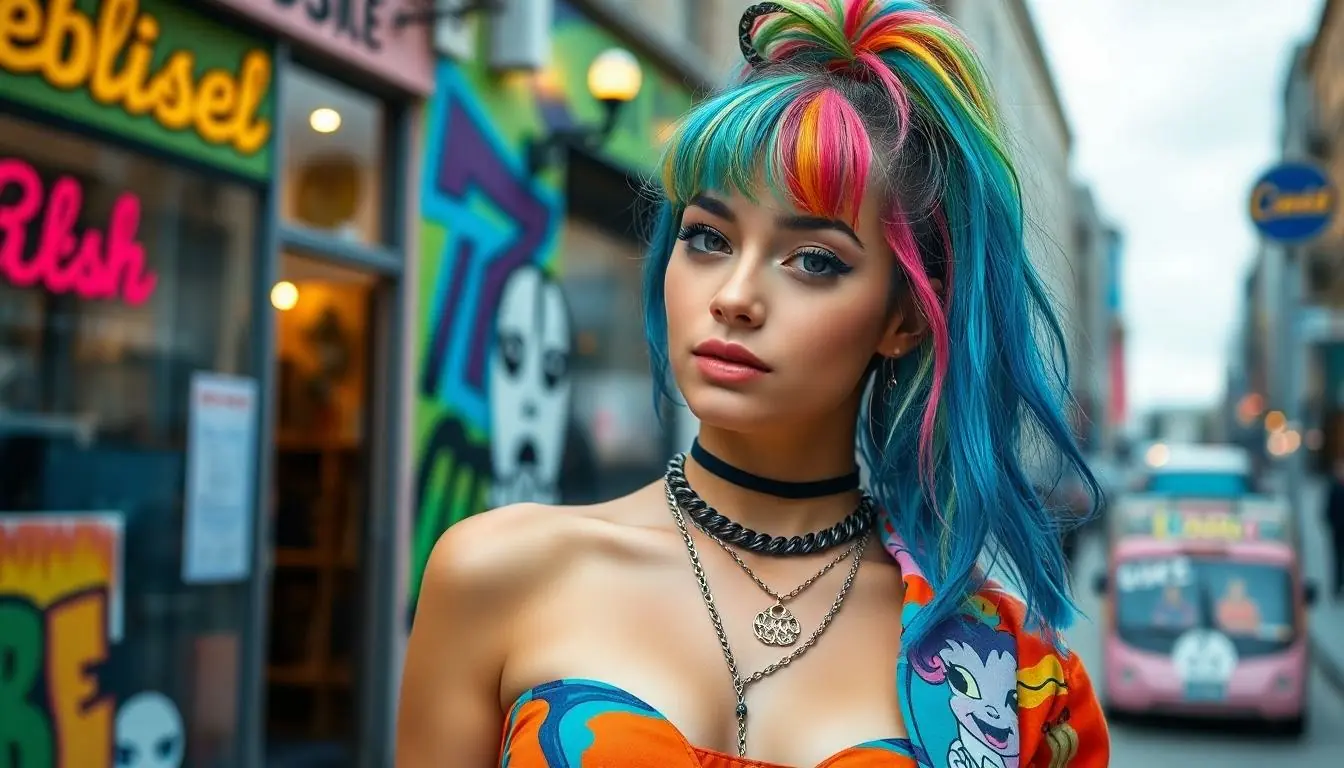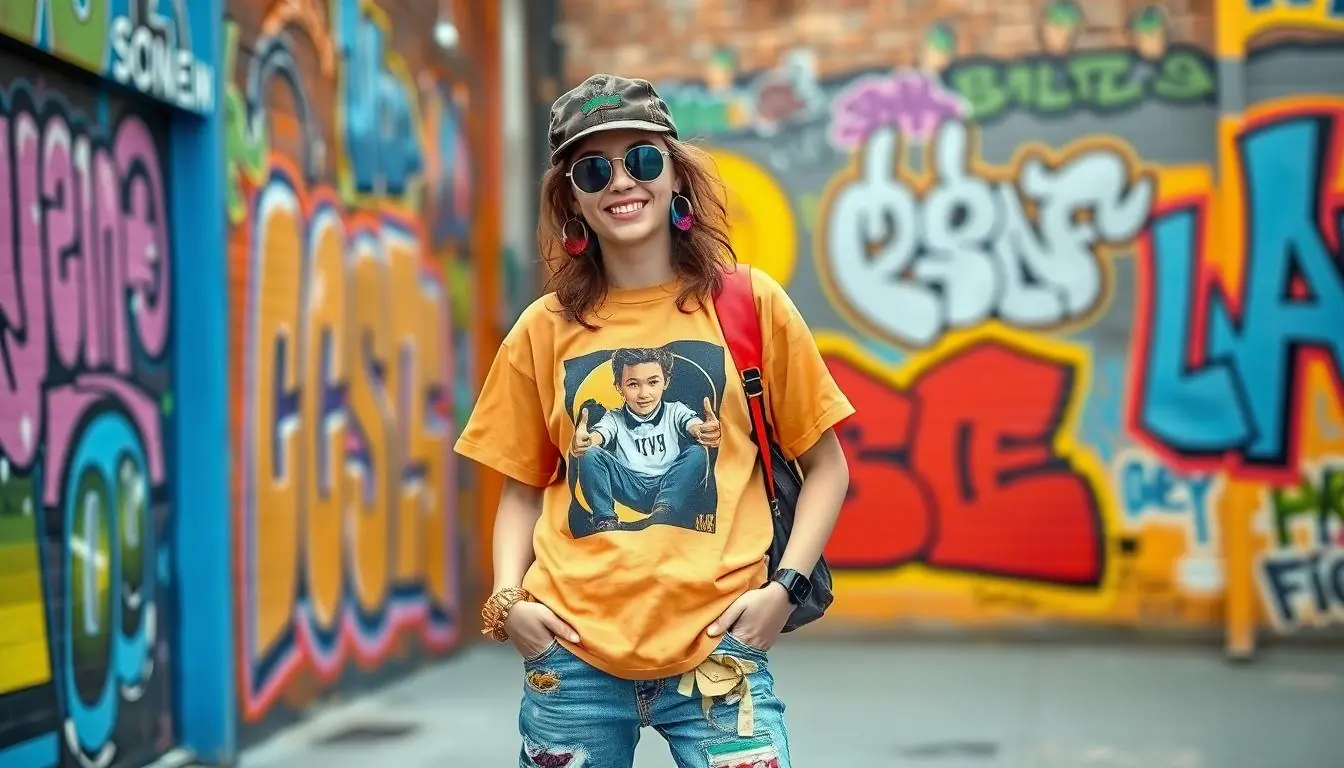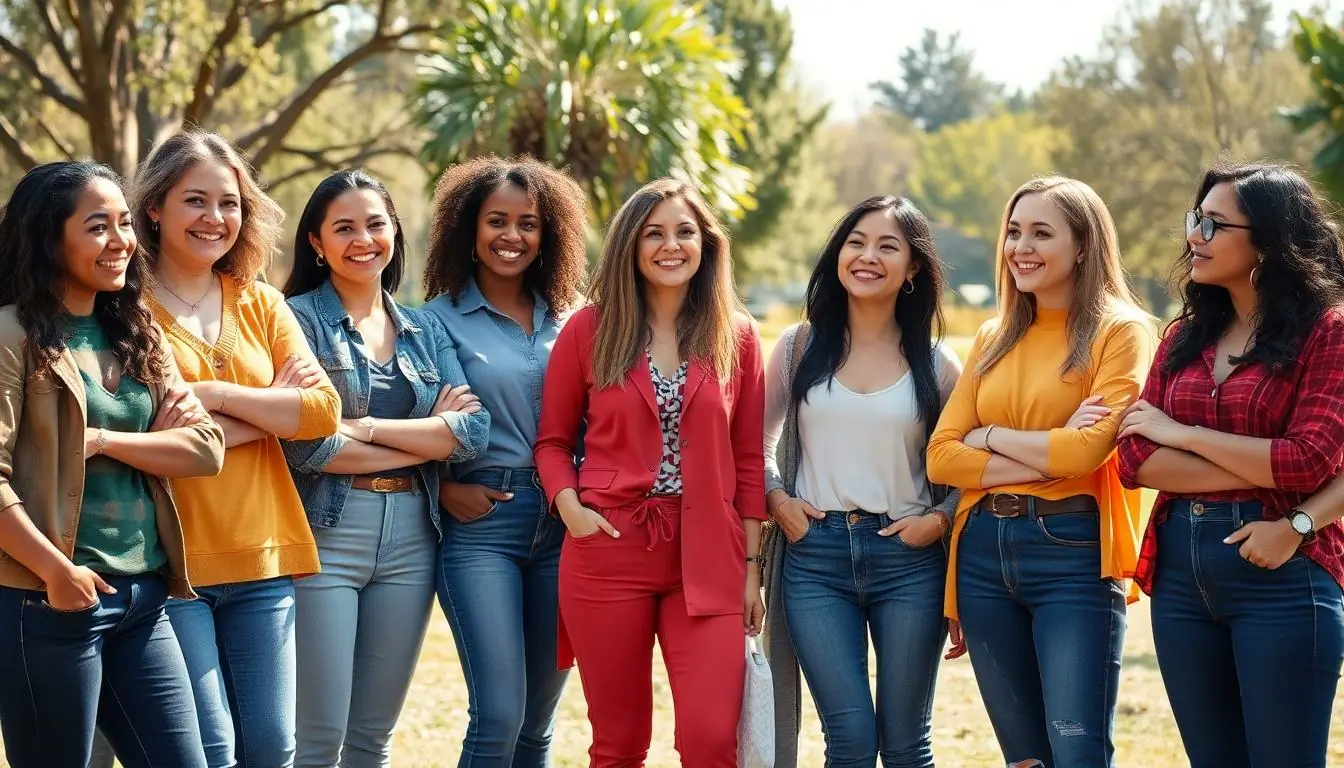Table of Contents
ToggleGen Z is redefining what it means to be stylish, and it’s a wild ride. With a flair for mixing vintage finds with bold statements, they’re turning heads and sparking trends faster than you can say “thrift store chic.” Gone are the days of following the crowd; this generation thrives on individuality and self-expression, making every outfit a personal manifesto.
From oversized silhouettes to vibrant colors and unique accessories, Gen Z style trends are a delightful mashup of nostalgia and innovation. They’re not just following trends; they’re creating them, often with a side of humor and a dash of irony. So buckle up and get ready to explore how this fashion-forward generation is shaking up the style scene, one TikTok video at a time.
Overview of Gen Z Style Trends
Gen Z style trends showcase a unique blend of nostalgia and innovation. This generation embraces individuality, reflecting personal identity through creative outfit combinations. Vintage pieces engage harmoniously with contemporary fashion, resulting in distinctive ensembles. Oversized silhouettes define their aesthetic, providing comfort without sacrificing style.
Vibrant colors often take center stage, with bright hues enlivening streetwear. Quirky accessories frequently enhance these looks, adding layers of personal flair. Instead of adhering strictly to trends, Gen Z creates and modifies styles, often with a playful twist. Humor and irony emerge as prevalent themes, making fashion statements that resonate with their peers.
Social media platforms, particularly TikTok, serve as crucial tools for sharing and discovering these trends. Influencers on these platforms showcase personal styles that inspire followers to experiment. Collaboration among brands and Gen Z influencers solidifies this generation’s impact on the fashion industry.
Sustainability has gained traction as a priority for many young consumers. Thrift shopping and upcycling reflect a commitment to environmentally-friendly practices, appealing to their values. This focus on sustainability highlights a broader awareness of ethical consumption.
Ultimately, Gen Z continues to redefine fashion norms. Their creativity breaks boundaries, fostering an inclusive environment that encourages self-expression. As fashion evolves, the imprint of Gen Z becomes increasingly significant in shaping future styles.
Key Influences on Gen Z Fashion

Gen Z fashion evolves through several key influences that shape their distinct style. This generation’s embrace of individuality drives their trend-setting moments.
Social Media Impact
Social media platforms, especially TikTok and Instagram, significantly influence Gen Z fashion choices. Visual content thrives on these platforms, allowing trends to spread rapidly. Influencers post outfits showcasing unique combinations, sparking inspiration among followers. User-generated content further highlights diverse styles, encouraging experimentation with fashion. Viral challenges often prompt users to create their versions of trending looks. Through likes, shares, and comments, Gen Z engages with styles from around the globe, creating a vibrant, interconnected fashion community.
Celebrity Endorsements
Celebrity endorsements play a substantial role in shaping Gen Z’s fashion preferences. Stars like Billie Eilish and Timothée Chalamet often set trends through their personal style choices. When they collaborate with brands, their influence reaches vast audiences, driving popularity for specific labels. Gen Z admires authenticity, leading them to prefer celebrities who genuinely represent their values. Pop culture moments, such as red carpet appearances, also ignite trends, as fans emulate the looks of their favorite stars. As a result, the intersection of celebrity influence and Gen Z’s desire for individuality continues to redefine modern fashion.
Popular Fashion Items Among Gen Z
Gen Z showcases a dynamic range of fashion items that reflect their values and preferences. The following categories highlight their most popular styles.
Streetwear Essentials
Streetwear dominates Gen Z’s fashion landscape. Oversized graphic tees serve as staples, easily paired with baggy cargo pants or distressed denim. Chunky sneakers often complete these looks, offering both comfort and style. Hoodies, frequently adorned with logos or bold graphics, provide versatile layering options. Caps and beanies add an accessory touch, enhancing street credibility. Streetwear brands like Supreme and Off-White resonate strongly, marking a shift towards urban culture and individuality.
Gender-Neutral Clothing
Gender-neutral clothing embraces inclusivity and diversity. Unisex styles feature relaxed fits and neutral color palettes, catering to a wide audience. T-shirts and sweatshirts often highlight minimalist designs, appealing to various aesthetics. This trend allows individuals to express their identities without conforming to traditional gender norms. Brands such as ASOS and Telfar lead the charge in offering collections that blur the lines between menswear and womenswear. Sustainable materials frequently accompany these items, aligning with Gen Z’s commitment to ethical fashion.
Sustainability in Gen Z Fashion
Sustainability drives Gen Z’s fashion choices. They actively seek eco-friendly brands that incorporate sustainable practices. Thrift shopping has surged in popularity, with many opting for secondhand clothing to reduce waste. Upcycling also plays a significant role, as individuals transform old garments into new styles, showcasing creativity and resourcefulness.
Many brands align with these values by using organic materials and ethical production methods. Companies such as Reformation and Everlane exemplify this trend, emphasizing transparency in their supply chains. Innovative approaches, like renting and swapping clothing, provide alternatives to fast fashion, promoting a circular economy.
Education around sustainability has also increased awareness. Social media platforms feature discussions on the environmental Impact of fashion. Influencers use their platforms to promote sustainable choices, encouraging their followers to make mindful purchases. Workshops and events focused on sustainability often attract crowds eager to learn.
Collaboration between fashion brands and environmental organizations showcases a commitment to positive change. For example, some brands partner with non-profits to support reforestation projects or ocean cleanup initiatives. Such efforts resonate with Gen Z’s desire for impactful actions beyond just wearing clothes.
Overall, Gen Z prioritizes sustainability in their fashion journey. Conscious choices shape their wardrobe selections while reinforcing personal values. They value brands that align with their ethics, embracing a more sustainable future in fashion.
Regional Variations in Style Trends
Regional differences significantly influence Gen Z style trends. In North America, streetwear dominates, characterized by oversized hoodies, graphic tees, and sneakers. Urban centers like New York City and Los Angeles showcase brands such as Supreme and Off-White, enhancing this trend’s popularity.
European Gen Z often leans towards minimalism. Cities like Paris and Copenhagen emphasize tailored pieces, neutral palettes, and effortless chic. Influential brands such as Acne Studios and A.P.C. exemplify this style, attracting young fashion enthusiasts seeking a sophisticated look.
South American fashion reflects cultural vibrancy. Colorful patterns and bold prints capture attention, often linked to local heritage. Brazil, for instance, showcases lively styles in swimwear and casual attire, where brands like Farm Rio serve as prime examples.
In Asia, particularly in countries like Japan and South Korea, street fashion merges with high fashion. Tokyo’s Harajuku district exemplifies playful layering, while Seoul highlights sleek silhouettes influenced by K-pop idols. Representing unique cultural narratives, brands like Ader Error contribute significantly to this dynamic aesthetic.
Across Africa, diverse regional styles emerge, with an increasing focus on traditional fabrics and modern silhouettes. Designers like Thebe Magugu from South Africa incorporate cultural motifs into their collections, resonating with Gen Z’s desire for authentic representations.
Gen Z’s approach to regional style variations emphasizes inclusivity. Awareness of global fashion trends transcends borders. Thriving online communities unite individuals, enabling the exchange of innovative ideas and styles. Each region’s contributions enrich the broader fashion conversation, fostering creativity and personal expression.
Gen Z’s influence on fashion is undeniable. Their unique blend of self-expression and sustainability is reshaping the industry in exciting ways. By embracing vintage aesthetics while pushing the boundaries of modern style they’ve created a vibrant tapestry of trends that reflect their values and identities.
As they continue to prioritize ethical consumption and inclusivity the fashion landscape will likely evolve further. The dynamic interplay between social media and personal style will keep driving innovation. With each passing season Gen Z proves that fashion is not just about clothing but a powerful medium for creativity and connection. Their impact will resonate for years to come.







